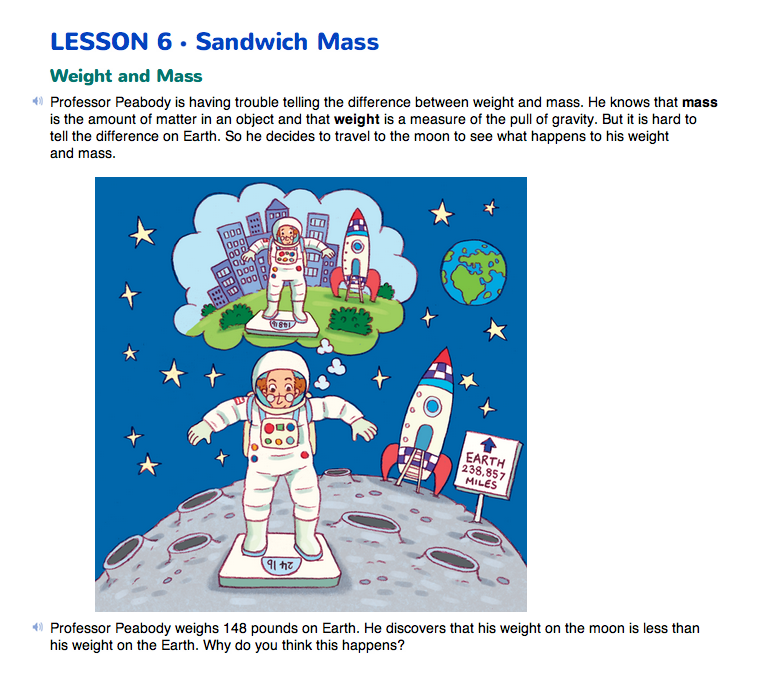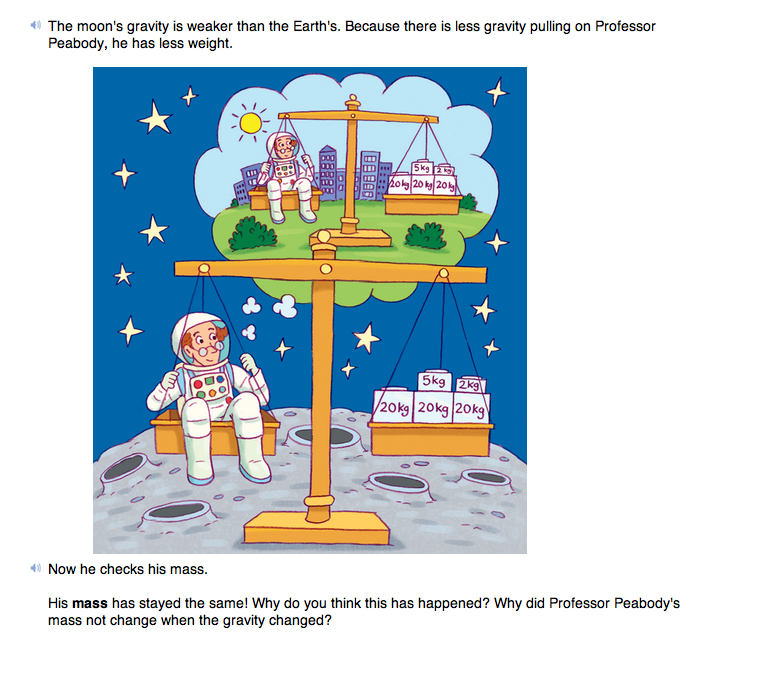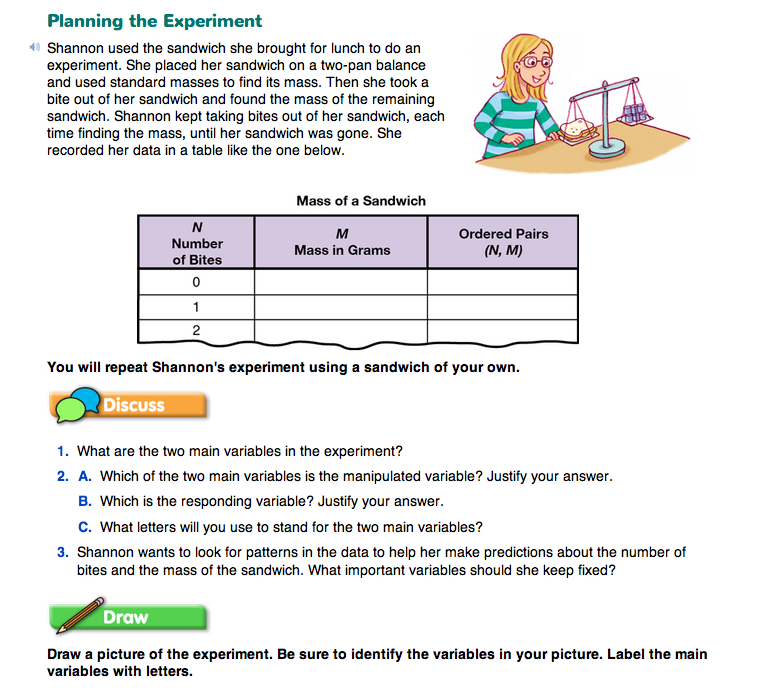Sandwich Mass
Est. Class Sessions: 2–3Developing the Lesson
Part 1. Plan the Experiment
Discuss Weight and Mass. Ask students to read the Weight and Mass section of the Sandwich Mass pages in the Student Guide. Students should already be aware of the differences in gravity on the Earth and the moon from news about space travel or from displays at museums and planetariums. Briefly discuss the questions on these pages in preparation for the lab.
On the first page, Professor Peabody travels to the moon and finds that his weight is different on the moon. There is less gravity on the moon than on the Earth. And since weight is the force of gravity on a certain mass and there is less gravitational force on the moon, Professor Peabody has less weight. The weight of an object is a measure of the “pull” of gravity on the object. Since there is less gravity on the moon, Professor Peabody weighs less on the moon than on Earth.
The second page shows students how Professor Peabody's mass did not change between the Earth and the moon. Professor Peabody has the same mass, the same amount of matter as he did on Earth. The pull of gravity has changed, but not the mass.
Professor Peabody can measure his mass on the moon, provided he uses a balance. He balances the same number of standard masses as he did on Earth. The weaker pull of gravity does not matter since it is a weaker pull on both Professor Peabody and the standard masses.
Plan the Experiment. Use the short vignette in the Planning the Experiment section of the Student Guide to discuss the lab's general process. Model the lab using a sandwich, napkin, two-pan balance, and a set of standard masses. First find the mass of a whole sandwich, then take a bite and mass the sandwich again. Repeat the process for one, two, and four bites. Students may want you to take large bites out of your sandwich. However, this will decrease your opportunities to collect data. Remind students to take normal-size bites, all the same size.
Identify the Variables and Draw a Picture. Use Questions 1–3 in the Student Guide to discuss the variables in the experiment. The manipulated variable is the Number of Bites of the sandwich (N) because the experimenter chooses the number of bites and then finds the Mass of the sandwich (M), the responding variable. The size of the bites is an important fixed variable (Question 3). Students with bites of equal size will be more able to make accurate predictions. Other fixed variables are the person taking the bites and the kind of sandwich.
After the lab's general process is established, ask students to draw a picture of the experiment and label the variables. You can assess students' readiness to begin data collection by reviewing students' pictures and their answers to Questions 1–3.














